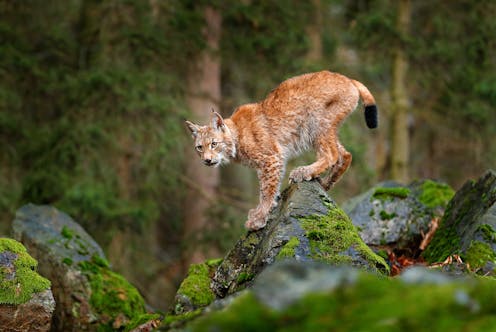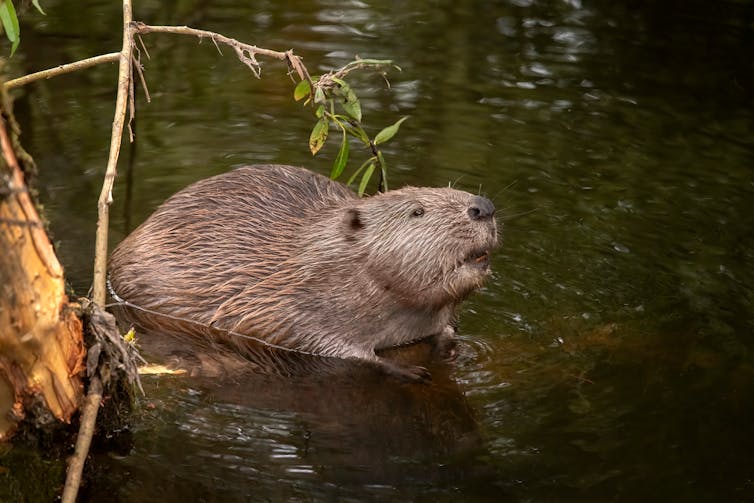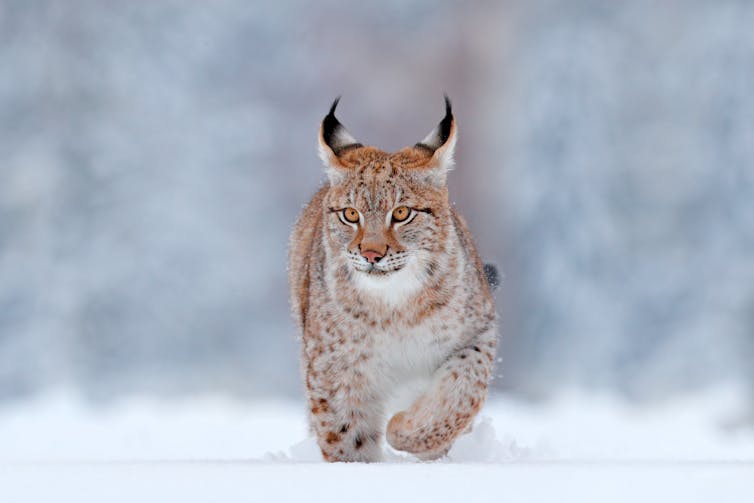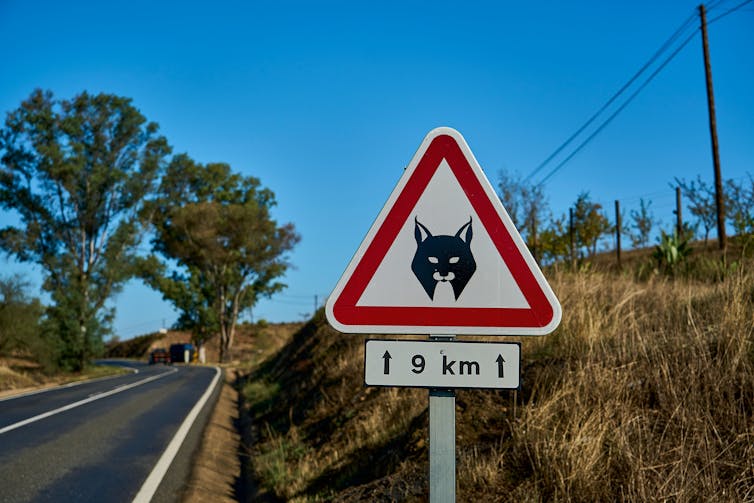
For more than 500 years, no lynx had roamed the British countryside. That changed with the recent release of four of these large cats in the Cairngorm mountains of Scotland.
This was an action that is widely assumed to be linked to attempts to reintroduce species that had been wiped out in Britain, as part of a wider rewilding movement. Supporters of these reintroductions typically want to atone for past extinctions, and want to create richer, more dynamic ecosystems.
The lynx were soon recaptured, with one dying shortly after. For now, foxes and badgers remain Britain’s largest predatory mammals.
While many conservation organisations are working with the authorities to bring back species, from microscopic fungi to half-tonne bison, some people are reintroducing them without seeking guidance or approval. In fact, such illicit and unregulated reintroductions are surprisingly common.
Illicit beaver populations have sprung up across Europe, from southern Italy and Spain to Wales, Scotland and England. The phenomenon is so widespread it is referred to as “beaver bombing”, now matched by “boar bombing” in Scotland and across southern England.
In Britain, there have also been illicit reintroductions of smaller mammals, as well as insects and wildflowers that are much easier and cheaper to obtain, transport and release. Wildflower seeds and butterfly pupae or eggs can be easily bought online and delivered to your door, then let loose during a nice country walk.
Transforming political debates
Illicit and unregulated reintroductions matter. They can lead to new populations of previously missing species – there are over a thousand beavers living in the Tayside region of Scotland, for instance, widely thought to descend from beavers deliberately, and illegally, released in the early 2000s. In England, the New Forest population of pine martens are similarly thought to originate from illegal releases in the early 1990s.

This can transform political debates. While there were proposals to reintroduce beavers as an experiment before the illicit Tayside reintroduction, self-sustaining populations increased political and public support for more widespread, approved releases. The presence of wild beavers in Scotland changed what was a theoretical notion of having beavers into something more tangible that the public could relate to, and it forced decision makers to address the issue rather than avoid it.
Illicit and unregulated reintroductions can be controversial. Farmers and other land managers do not always take kindly to new species popping up on their land without warning or consultation. In Tayside, beavers have been killed by farmers who were angry at the damage caused to their properties by dams and burrows.
All this sheds light on important differences among conservationists. As these reintroductions are illicit, it is difficult to have clear understanding of who is behind them, and why. We are aware of only one case – of beavers in Belgium – where an illicit reintroducer has been publicly identified and prosecuted. But they reflect a frustration with official reintroduction processes and regulations, seen by some as too slow, bureaucratic and risk averse.

Opinions within conservation range from seeing illicit reintroductions as reckless and harmful to lauding them as heroic, game-changing acts. This reflects real disagreements on what species belong in a given country, and how reintroductions should be done. Releasing animals and plant material is considered a major biosecurity risk by some, whereas others see this as overstated.
There are also concerns about genetic contamination. While regulations and recommendations say that animals and plants for release should be a close genetic match for those which existed in a place previously, to ensure that they are best suited to the conditions, other conservationists say this is a pedantic irrelevance given climate and other environmental changes.
Many conservationists also worry about whether released animals are able to cope with the shift from life in captivity. Given that lynx in the wild are extremely shy, the ease by which the Cairngorms foursome were captured shows they were too tame to survive in Scottish woods.
Likewise, the black-veined white butterflies that have appeared in the past few years in south-east England, the first UK sightings in a century, probably came from unlicensed releases, but are thought unlikely to breed and survive. Yet, the thriving beaver and pine marten populations show this is not always an issue.
Coexistence is difficult
Predators like lynx are the most contentious reintroductions, because they are big enough to target livestock and scare humans. Coexistence between people and predators is difficult, involving careful strategies to minimise harm and create trusting relationships. Of all the different ways a predator might come back to an area – natural colonisation, a planned reintroduction or an illicit release – the last is most contentious because such relationships and strategies are missing.

That’s why existing campaigns to reintroduce lynx to Scotland are strongly condemning the Cairngorms release. They see it as undermining their work to carefully build bridges with farmers. Judging by reactions of land managers to illicit beaver releases in Scotland, it may also generate opposition to any kind of reintroduction. By feeding into narratives of “arrogant” conservationists, it might undermine support, especially in rural communities that may one day have to live with reintroduced lynx.
If conservationists want to see a free-living, healthy and self-sustaining population of lynx, they’ll need to build careful relationships with local people and other interest groups. They’ll need to put forward a clear idea of how to live successfully alongside lynx, and what to do when either people or lynx overstep the mark. Illicit reintroductions are unlikely to get us there.
Don’t have time to read about climate change as much as you’d like?
Get a weekly roundup in your inbox instead. Every Wednesday, The Conversation’s environment editor writes Imagine, a short email that goes a little deeper into just one climate issue. Join the 40,000+ readers who’ve subscribed so far.
George Holmes is a member of DEFRA's England Species Reintroduction Task Force, an independent technical advisory group which provides evidence-led advice and guidance on existing and potential species conservation translocations in England. He has received funding for species-reintroduction related research from UKRI and the Leverhulme Trust.
Darragh Hare is a member of advisory groups for projects in Scotland involving beavers and Scottish wildcats. He has received funding from the UKRI Strategic Priorities Fund at the University of Oxford to study public perceptions of lynx reintroduction to Scotland.
Hanna Pettersson does not work for, consult, own shares in or receive funding from any company or organisation that would benefit from this article, and has disclosed no relevant affiliations beyond their academic appointment.
This article was originally published on The Conversation. Read the original article.







